SISCO arbitrary wave generator built-in 7-bit/s, 240 MHz bandwidth full-function frequency meter, with arbitrary waveform sequence editing function, which can also generate arbitrary waveforms through PC software. 50 MHz arbitrary generator's touchscreen controls with clicks and swipes combine with multifunction knobs to make it easy to find and update waveform settings; switch between channels, configure each channel, and easily load standard functions or arbitrary waves.
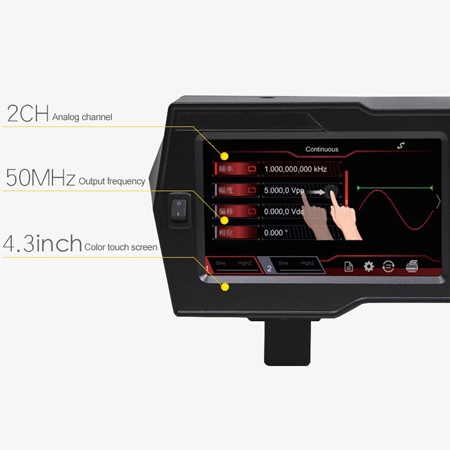
- 4.3-inch TFT color touch screen, high contrast, strong layering, bright colors, single-sided anti-glare glass, to ensure clear colors, dust and knock resistance.
- Original SiFi II (Signal Fidelity II) technology: Generate arbitrary waveforms point by point, restore signals without distortion, accurately adjust the sampling rate, and the jitter of all output waveforms (including square waves, pulses, etc.) is as low as 200ps.
- The arbitrary wave generator supports RS232, PRBS and Dualtone output.

- Standard dual channels with equal performance, equivalent to two independent signal sources.
- USB HOST & DEVICE interface is standard, supports USB-GPIB function.
- The waveform generator supports RS232, PRBS and Dualtone output.
- Multiple analog and digital modulation functions: AM, FM, PM, ASK, FSK, PSK and PWM.
Dimension
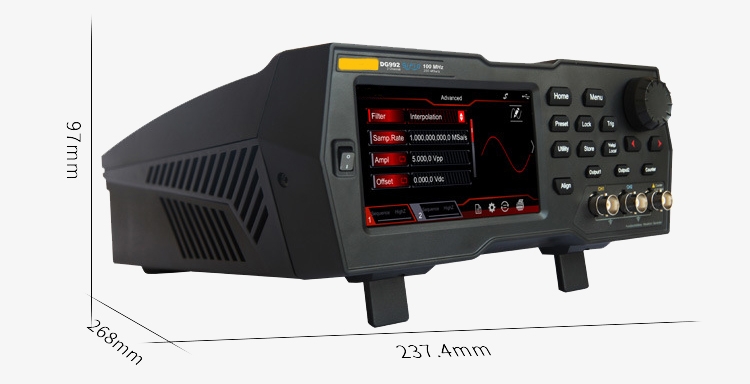
Applications
SISCO arbitrary waveform generator (AWG) is versatile and widely used in various fields. It can simulate complex communication signals, test and develop electronic components and circuits, generate biomedical signals for medical device testing, simulate automotive sensor outputs, and test radar and sonar systems in aerospace and defense. Additionally, AWGs are used in audio equipment testing, acoustic research, educational tools, industrial automation, power quality testing, and renewable energy systems. They are essential for precise and customizable signal generation, making them invaluable for development, testing, and research in multiple domains.
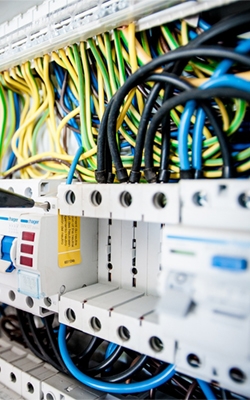
Power Quality Testing
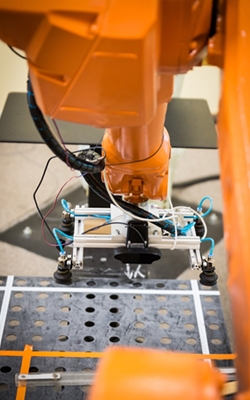
Industrial Automation

Equipment Testing
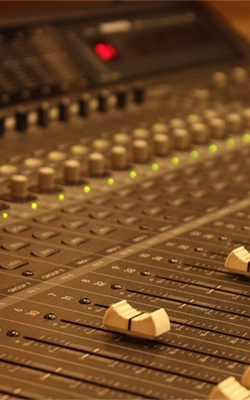
Audio Equipment Testing
| Model | SISCO-AWG-DG952 |
| Maximum Output Frequency | 50 MHz |
| Sampling Rate | 250 MSa/s |
| Vertical Resolution | 16 bits |
| Number of Channels | 2 |
| Arbitrary Wave Length | 16 Mpts |
| Waveform Type | Standard waveforms: sine, square, sawtooth, pulse, noise, dual tone, harmonic (up to 8th harmonic) Arbitrary waveforms: Sinch, exponential rise, exponential fall, ECG, Gaussian, Haversine, Lorentz, dual tone, DC voltage, etc., a total of 160 types Advanced waveforms: PRBS, RS232, Sequence output |
| Sine Wave | 1 μHz-50 MHz |
| Square Wave | 1 μHz-15 MHz |
| Sawtooth Wave | 1 μHz-1.5 MHz |
| Pulse Wave | 1 μHz-15 MHz |
| Arbitrary Wave | 1 μHz-15 MHz |
| Harmonic Wave | 1 μHz-20 MHz |
| Dual Tone | 1 μHz-20 MHz |
| RS232 | Baud rate range: 9600, 14400, 19200, 38400, 57600, 115200, 128000, 230400 |
| PRBS | 2 kbps-40 Mbps |
| Sequence | 2k-60 MSa/s |
| Noise (-3 db) | 100MHz bandwidth |
| Sine Wave Spectrum Purity | Total harmonics true: <0.075% (10Hz-20Hz, 0 dBm) Phase noise: <-105 dBc/Hz @10MHz (0 dBm, 10 kHz offset) |
| Square Wave Rise/Fall Time | Typical (1 Vpp) ≤9 ns |
| Signal Jitter | Typical (1 Vpp) ≤5 MHz: 2 ppm+200 ps>5 MHz: 200 ps |
| Output Amplitude (50Ω Termination) | ≤10 MHz: 1 mVpp-10 Vpp ≤30 MHz: 1 mVpp-5 Vpp ≤60 MHz: 1 mV-2.5 Vpp >60 MHz: 1 mV-2.5 Vpp |
| Modulation Type | AM, FM, PM, ASK, FSK, PSK, PWM |
| Working Mode | Continuous, burst, swept, modulated |
| Pulse Train Characteristics | Carrier frequency 2 mHz-10 MHz/25 MHz/35 MHz/50 MHz/70 MHz/100 MHz Pulse count: 1-1M or infinite; Trigger source: external, internal, manual |
| Standard Interface | USB (Device rear panel), USB (Host) |
Detail
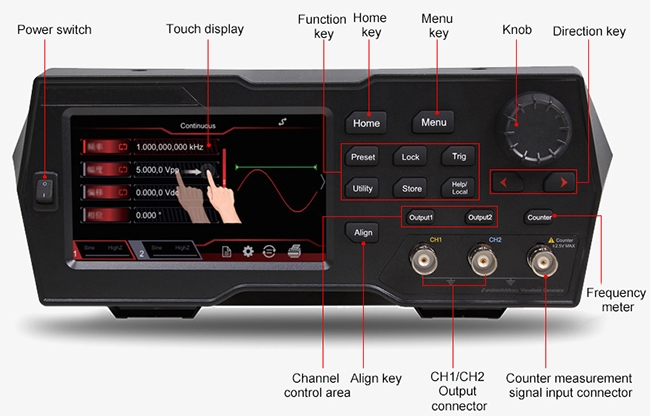
Q1: What is an Arbitrary Waveform Generator (AWG)?
A1: An Arbitrary Waveform Generator (AWG) is a device that generates user-defined, complex waveforms. It allows for the creation and output of a wide variety of signal shapes, beyond standard sine, square, and triangle waves.
Q2: How does an AWG differ from a standard function generator?
A2: Unlike standard function generators, which produce fixed waveforms like sine, square, and triangle waves, AWGs can produce any waveform defined by the user. This makes AWGs more versatile and suitable for complex testing scenarios.
Q3: What is the importance of the sampling rate in an AWG?
A3: The sampling rate in an AWG is crucial because it determines how accurately the waveform can be represented. A higher sampling rate provides better resolution and fidelity, ensuring the generated waveform closely matches the desired signal, which is essential for precise testing and measurement.
Tips: How to choose an arbitrary waveform generator (AWG)?
Choosing an Arbitrary Waveform Generator (AWG) involves considering several key factors to ensure it meets your specific needs and application requirements. Here are some important aspects to consider:
- Waveform Complexity and Types: Required Waveforms: Determine the types and complexity of waveforms you need. If your application requires complex or custom waveforms, ensure the AWG supports user-defined waveforms.
- Standard Waveforms: Check if the AWG can generate standard waveforms like sine, square, triangle, and pulse waves.
- Frequency Range: Maximum Frequency: Ensure the AWG supports the frequency range you need for your applications.
- Bandwidth: The bandwidth should be sufficient to accurately reproduce the highest frequency components of your waveforms.
- Sampling Rate: High Sampling Rate: A higher sampling rate provides better waveform resolution and fidelity. Choose an AWG with a sampling rate that meets or exceeds your signal requirements.
- Amplitude Range: Verify the AWG can output the voltage levels required for your tests.
- Vertical Resolution: Higher resolution (more bits) means more precise amplitude control, which is critical for accurate signal generation.
Thank you for buying industrial test and measurement equipment on SISCO.com, all products sold by SISCO and the partner cover a 12 months warranty, effective from the date of receiving the products.
What is covered?
SISCO is responsible for providing free spare parts, and free technical support to assist the customer to repair the defective products until the problem is solved.
What is not covered?
- Product purchased from anyone other than a SISCO store or a SISCO authorized reseller.
- Expendable parts.
- Routine cleaning or normal cosmetic and mechanical wear.
- Damage from misuse, abuse or neglect.
- Damage from use of parts other than SISCO approved.
- Damage from use outside the product’s usage or storage parameters.
- Damage from use of parts not sold by SISCO.
- Damage from modification or incorporation into other products.
- Damage from repair or replacement of warranted parts by a service provider other than a SISCO authorized service provider.
- Damage caused by the application environment not meeting the product usage requirements and the failure to perform preventive maintenance.

